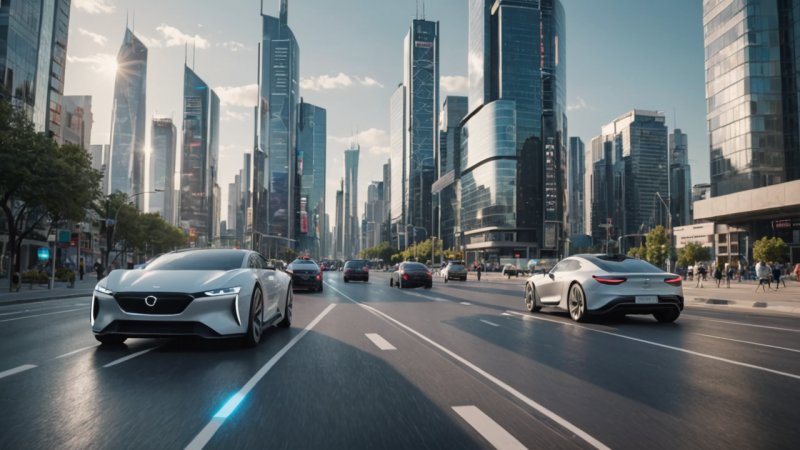The automotive landscape is undergoing a profound transformation as autonomous vehicles (AVs) emerge as a revolutionary technology poised to redefine how we think about driving, transportation, and even urban planning. With advancements in artificial intelligence, machine learning, and sensor technology, vehicles are increasingly capable of navigating roads with minimal or no human intervention. The implications of this technology extend beyond mere convenience; they encompass safety, efficiency, environmental impact, and even social dynamics. This article delves into the various facets of autonomous vehicles, exploring how they are reshaping the future of driving while highlighting key innovations, challenges, and societal implications.
Understanding Autonomous Vehicles
Autonomous vehicles are equipped with a suite of technologies that allow them to perceive their environment and make decisions without human input. These technologies include:
- LiDAR: Light Detection and Ranging technology helps create detailed 3D maps of the surrounding environment, enabling the vehicle to detect obstacles and navigate complex terrains.
- Computer Vision: Cameras and image processing algorithms allow AVs to recognize traffic signs, pedestrians, and other vehicles.
- Radar: Radio Detection and Ranging systems help in tracking the speed and distance of objects around the vehicle, especially in adverse weather conditions.
- Machine Learning: Algorithms that enable the vehicle to learn from past experiences and improve its driving capabilities over time.
- Connectivity: Vehicle-to-everything (V2X) communication enhances the ability of AVs to interact with other vehicles, infrastructure, and even pedestrians.
These technologies work in concert to create a self-driving experience that can range from driver-assist systems to fully autonomous capabilities.
The Levels of Autonomy
Autonomous vehicles are categorized into six levels of autonomy, as defined by the Society of Automotive Engineers (SAE):
- Level 0: No automation. The human driver is responsible for all aspects of driving.
- Level 1: Driver assistance. The vehicle can assist with either steering or acceleration/deceleration but requires constant human oversight.
- Level 2: Partial automation. The vehicle can control both steering and acceleration/deceleration under certain conditions, yet the driver must remain engaged.
- Level 3: Conditional automation. The vehicle can manage all driving tasks in specific environments, but the driver must be ready to take control when requested.
- Level 4: High automation. The vehicle can operate independently in most environments but may have limitations in certain conditions.
- Level 5: Full automation. The vehicle can operate without any human intervention in all environments and conditions.
As we move towards Level 5 autonomy, the implications for daily life, urban infrastructure, and the driving experience are immense.
Impact on Safety and Efficiency
One of the most compelling arguments for the adoption of autonomous vehicles is the potential for enhanced safety. According to the National Highway Traffic Safety Administration (NHTSA), over 90% of road accidents are attributed to human error. By removing the human factor, AVs could significantly reduce the number of accidents caused by distracted driving, fatigue, and impaired judgment.
Moreover, the efficiency of transportation systems is expected to improve dramatically. AVs can communicate with one another to optimize routing, reducing traffic congestion and travel times. This efficiency can lead to:
- Reduced fuel consumption and emissions due to smoother traffic flow.
- Increased vehicle utilization, as AVs can operate in a fleet model, offering rideshare services that maximize their usage.
- Enhanced access to transportation for individuals who are unable to drive, such as the elderly or disabled.
These benefits contribute to a more sustainable and user-friendly transportation ecosystem.
Challenges and Concerns
Despite the promising advantages of autonomous vehicles, several challenges and concerns must be addressed before widespread adoption can occur:
- Legal and Regulatory Hurdles: Existing traffic laws were designed with human drivers in mind. New regulations will need to be established to govern the use of AVs on public roads.
- Public Trust: Building confidence in AV technology is crucial. High-profile accidents involving autonomous vehicles have raised concerns about their safety and reliability.
- Cybersecurity Risks: As vehicles become more connected, the potential for cyberattacks increases. Protecting AVs from hacking and unauthorized access is paramount.
- Ethical Dilemmas: AVs face complex ethical decisions during unavoidable accidents. Determining how an AV should act in these scenarios raises moral questions.
Addressing these challenges will require collaboration among technology developers, lawmakers, and the public.
The Future of Urban Planning
The implementation of autonomous vehicles could lead to significant changes in urban planning and infrastructure. With the reduction in the need for parking spaces, cities may be able to repurpose these areas for green spaces, public transit hubs, or pedestrian walkways. Additionally, the efficiency of AVs could lead to:
- Reduced demand for personal car ownership, encouraging a shift towards shared mobility solutions.
- Enhanced public transport systems that integrate AVs for last-mile connectivity.
- Redesigning roadways to prioritize AVs, leading to safer and more efficient traffic management.
Such transformations could create more livable, sustainable urban environments.
Conclusion
Autonomous vehicles represent a paradigm shift in the way we conceive of driving and transportation. While the technology is still in its nascent stages, the potential benefits in safety, efficiency, and urban planning are substantial. However, the journey towards fully autonomous driving will require overcoming significant challenges, including legal frameworks, public trust, and ethical considerations. As we continue to innovate and adapt, autonomous vehicles may very well reshape our daily lives, redefining not just how we drive, but how we interact with our cities and communities.






